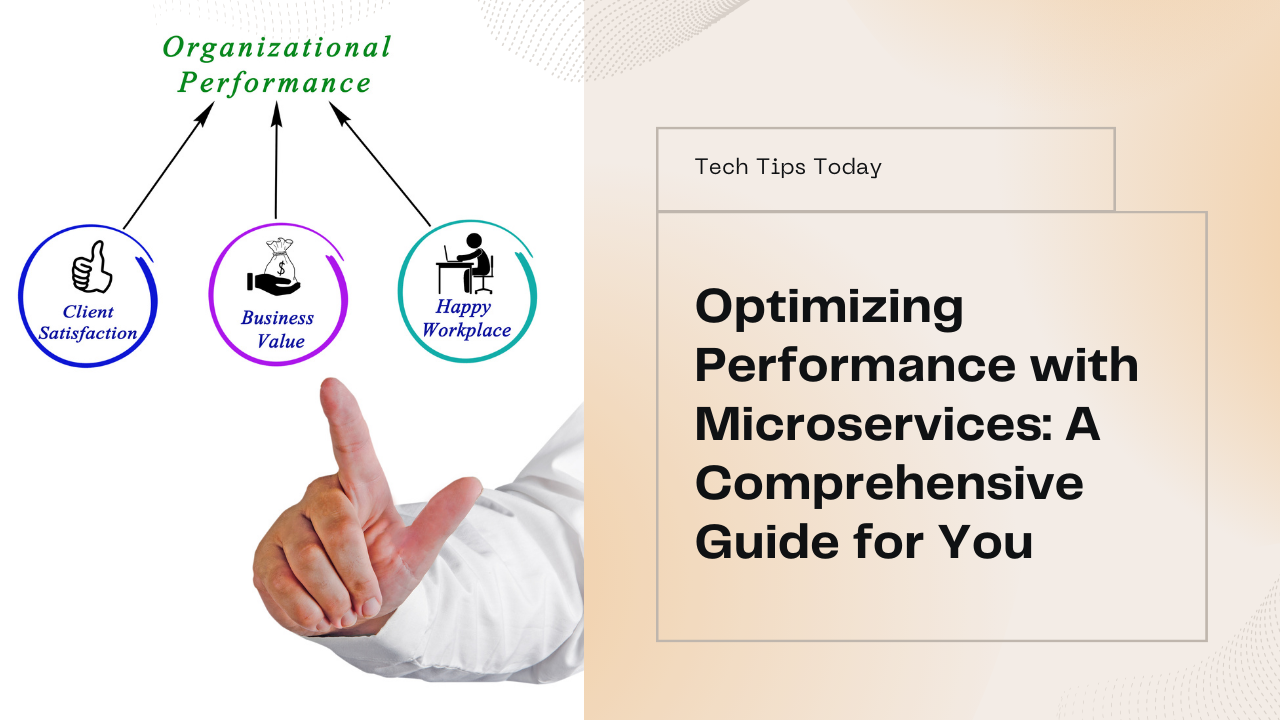In the fast-paced world of financial technology (fintech), the need for rapid innovation, scalability, and flexibility has never been more critical. As financial institutions and startups alike seek to modernize their systems and deliver enhanced customer experiences, microservices architecture has emerged as a transformative approach to software development. This blog explores the future of microservices in fintech, examining their benefits, challenges, and trends shaping the landscape.
Understanding Microservices Architecture
What Are Microservices?
Microservices architecture is a design approach that breaks down applications into small, independent services that communicate with each other through well-defined APIs. Each service is responsible for a specific business function and can be developed, deployed, and scaled independently. This modularity contrasts with traditional monolithic architectures, where applications are tightly coupled, making them difficult to scale and maintain.
Why Microservices Are Gaining Popularity in Fintech
The fintech industry is characterized by rapid technological advancements, changing regulations, and increasing customer expectations. Microservices architecture offers several advantages that align well with the needs of this dynamic environment:
- Scalability: Financial applications often experience fluctuating workloads. Microservices enable organizations to scale specific services based on demand, ensuring optimal performance during peak times.
- Faster Time-to-Market: With microservices, development teams can work on different services simultaneously, accelerating the release of new features and innovations.
- Resilience: In a microservices architecture, failures in one service do not necessarily affect the entire application. This fault isolation enhances the overall resilience of fintech applications.
- Technology Diversity: Microservices allow organizations to use different technologies and programming languages for different services, enabling them to choose the best tools for each specific function.
The Role of Microservices in Transforming Fintech
1. Enabling Agile Development
Agility is crucial in fintech, where regulatory changes and market demands can shift rapidly. Microservices facilitate agile development practices by allowing teams to focus on specific services without the constraints of a monolithic architecture. This enables faster prototyping, testing, and iteration, empowering fintech companies to respond quickly to customer needs.
2. Supporting Open Banking Initiatives
The rise of open banking is reshaping the financial services landscape. Open banking allows third-party developers to build applications and services around financial institutions, fostering innovation and competition. Microservices play a vital role in this ecosystem by enabling seamless integration with various banking APIs and services. This modularity allows fintech companies to create value-added services and enhance customer experiences.
3. Enhancing Security and Compliance
Security and compliance are paramount in the fintech industry, where sensitive customer data is at stake. Microservices architecture allows organizations to implement security measures at the service level, ensuring that each component adheres to regulatory requirements. Additionally, services can be updated or replaced independently, making it easier to address vulnerabilities and stay compliant with evolving regulations.
4. Facilitating Data Management and Analytics
In the data-driven world of fintech, organizations must harness vast amounts of data to gain insights and make informed decisions. Microservices enable efficient data management by allowing services to own and manage their own data. This decentralization fosters better data consistency and reduces the risk of data silos. Moreover, organizations can leverage data analytics services to extract valuable insights from user interactions, transaction patterns, and market trends.
Challenges in Adopting Microservices in Fintech
While the benefits of microservices are clear, fintech organizations must also navigate several challenges during implementation:
1. Complexity of Integration
Microservices introduce complexity in integration, as each service must communicate effectively with others. Managing inter-service communication, data consistency, and orchestration can become challenging. Organizations must invest in robust API management tools and service mesh solutions to streamline communication and ensure seamless interactions between services.
2. Cultural Shift
Transitioning to a microservices architecture often requires a cultural shift within organizations. Development teams must adopt a DevOps mindset, emphasizing collaboration, automation, and continuous integration/continuous deployment (CI/CD) practices. This cultural change can be met with resistance, as teams accustomed to traditional development approaches may find it challenging to adapt.
3. Monitoring and Management
With multiple services in play, monitoring and managing a microservices architecture can be daunting. Organizations must implement effective monitoring and logging solutions to track performance, identify issues, and gain insights into system behavior. Tools like Prometheus, Grafana, and the ELK stack (Elasticsearch, Logstash, Kibana) are essential for maintaining the health of microservices-based applications.
4. Security Concerns
While microservices can enhance security, they also introduce new vulnerabilities. Each service must be secured independently, and communication between services must be encrypted to protect sensitive data. Organizations must implement robust security practices, including authentication, authorization, and data encryption, to safeguard their microservices architecture.
Trends Shaping the Future of Microservices in Fintech
1. The Rise of Serverless Architecture
Serverless architecture is gaining traction in the fintech sector, offering an additional layer of abstraction for microservices. With serverless computing, developers can focus on writing code without managing the underlying infrastructure. This model allows for even greater scalability and cost-efficiency, making it an attractive option for fintech organizations looking to enhance their microservices architecture.
2. Increased Adoption of APIs
As fintech companies embrace open banking and collaborative ecosystems, the demand for APIs is on the rise. Microservices enable the development of APIs that facilitate seamless integration with third-party applications and services. This trend is driving the creation of innovative fintech solutions that enhance customer experiences and streamline financial transactions.
3. Enhanced DevOps Practices
The adoption of microservices is closely tied to the rise of DevOps practices. Fintech organizations are increasingly embracing CI/CD pipelines, automated testing, and infrastructure as code (IaC) to improve development efficiency and reduce time-to-market. By fostering a culture of collaboration between development and operations teams, organizations can maximize the benefits of microservices.
4. Focus on Observability
As microservices architectures become more complex, organizations are placing a greater emphasis on observability. Observability encompasses monitoring, logging, and tracing to gain insights into system behavior and performance. Fintech companies are leveraging tools like distributed tracing to track requests across multiple services, helping them identify bottlenecks and optimize performance.
5. Integration of Artificial Intelligence (AI) and Machine Learning (ML)
The integration of AI and ML into microservices is set to revolutionize the fintech industry. By leveraging AI and ML algorithms, fintech organizations can enhance fraud detection, automate customer service, and provide personalized financial recommendations. Microservices architecture enables the development of AI-driven services that can be integrated seamlessly into existing fintech applications.
Case Studies: Successful Microservices Implementation in Fintech
1. PayPal
PayPal is a prime example of a fintech company that has successfully implemented microservices architecture. The company transitioned from a monolithic application to a microservices-based platform to improve scalability and resilience. This transformation allowed PayPal to handle millions of transactions per second and deliver a seamless user experience.
2. Revolut
Revolut, a digital banking alternative, has leveraged microservices to enhance its product offerings and customer experience. By adopting microservices, Revolut has been able to launch new features quickly, such as cryptocurrency trading and international money transfers, while maintaining a secure and reliable platform.
3. Square
Square, the financial services and mobile payment company, has embraced microservices to support its growing ecosystem of payment solutions. The company’s microservices architecture enables it to scale specific services based on demand, ensuring optimal performance during peak transaction periods.
Conclusion
The future of microservices in fintech is bright, driven by the need for agility, scalability, and innovation in a rapidly evolving industry. As fintech organizations continue to embrace microservices architecture, they will unlock new opportunities for growth and differentiation. However, navigating the challenges of integration, cultural shifts, monitoring, and security will be critical to successful implementation.
At Sodio Technologies, we specialize in helping fintech companies harness the power of microservices to drive innovation and enhance customer experiences. Our team of experts is well-versed in the intricacies of microservices architecture and can guide your organization through every step of the journey. Contact us today to learn how we can support your fintech initiatives and ensure your success in the competitive landscape of financial technology.







